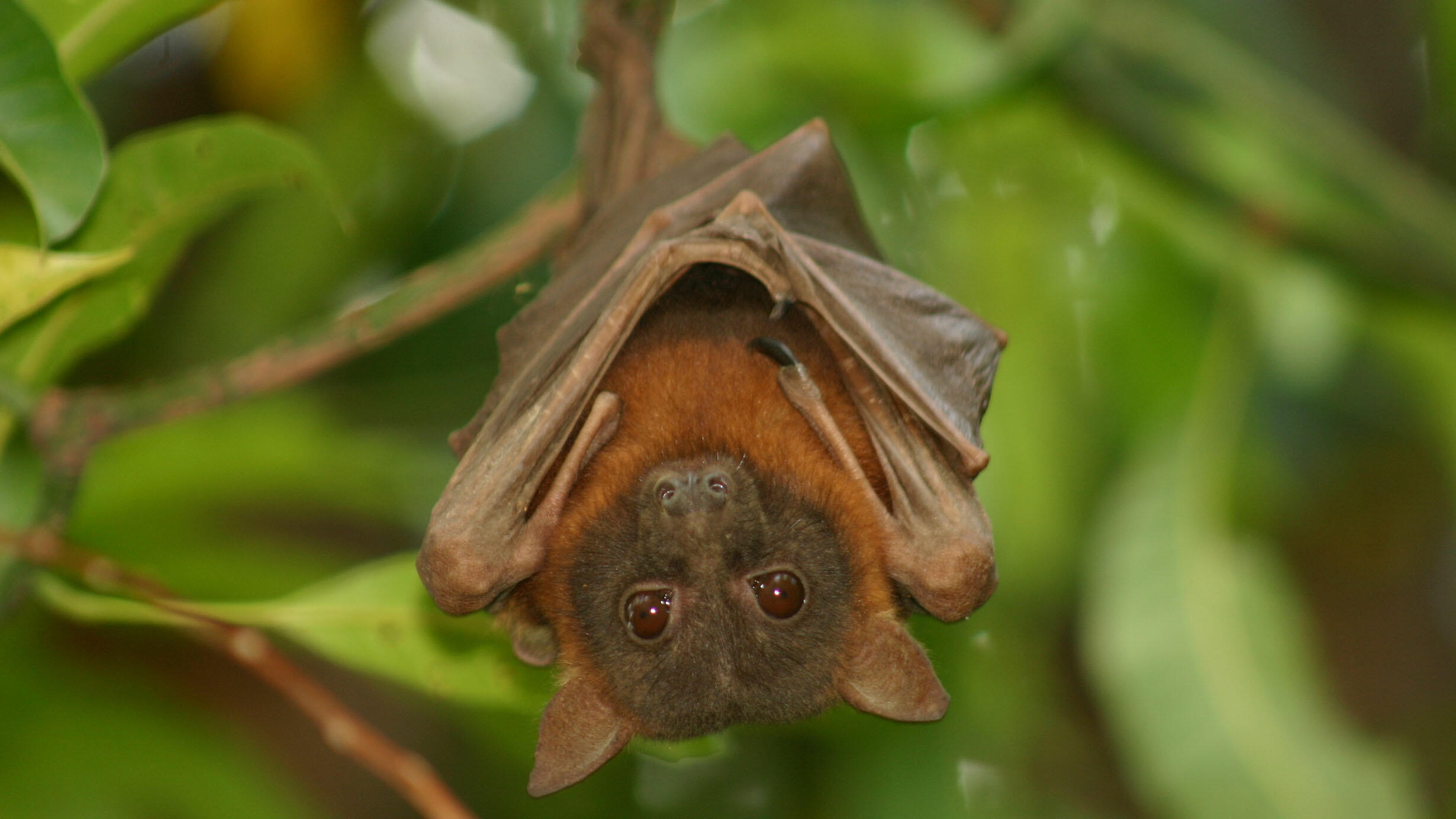 The red flying fox (Pteropus scapulatus). Flying foxes are known to host viruses that have spilled over into humans.
The red flying fox (Pteropus scapulatus). Flying foxes are known to host viruses that have spilled over into humans.© Raina Plowright
A team of 25 scientists from institutions around the world, including the Museum, has proposed a road map for preventing future pandemics by protecting ecosystems.
The majority of pandemics begin when animals such as bats, mosquitos, and monkeys, come into close proximity with people, livestock, or other animals and pass on new pathogens that may naturally occur in wildlife but can cause diseases in people.
Zoonotic diseases such as SARS-CoV-2 (which causes COVID) are more likely to “jump” to human populations when human activities, including changes in land use, farming of wild animals, and illegal wildlife trade bring people and domestic animals into close proximity with wild animals. Limiting opportunities for proximity could provide a first line of defense against future pandemics.
“The world is focused on how can we detect and then contain a novel pathogen once it is circulating in humans, rather than how can we prevent that pathogen from entering the human population in the first place,” said Raina Plowright, a professor at Cornell University and first author of the paper, which is published today in Nature Communications.
© Vivien Jones
Virulent viruses such as SARS-CoV-2, SARS-CoV-1 (SARS), Nipah, Hendra, and possibly Ebola have all spilled over from bats to humans, sometimes through an intermediate host. Drawing on insights from ecology and diseases studies, the scientists, including researchers from universities and conservation groups based in the U.S., the United Kingdom, Switzerland, Uganda, India, Australia, South Africa, and Nigeria focused on what types of conditions can lead to spillover of pathogens from wildlife to people.
For example, a pair of studies in 2022 showed how the fatal Hendra virus can spread to horses and people as a result of human activity. When bats lose their natural habitats and winter food sources, their large populations splinter and they migrate in small groups to agricultural and urban areas. Once in their new location, and partly due to inadequate food sources, bats become stressed and shed more virus in their urine. The virus falls to the ground, spreading to grazing horses, which in turn infect people. But when natural habitats provide adequate food for bats, especially in winter months, the bats return to these habitats, aggregate in large numbers, and stop shedding virus.
The new study uses this and other case studies to explain how environmental change can lead to spillover of pathogens from animals to humans and identifies ecological countermeasures that could disrupt these links.
© Vivien Jones
Interventions to prevent pathogen spillover from bats include protecting the places where bats eat to ensure an abundant supply of food at all times of year; protecting where bats roost as well as spaces that act as buffers between people and wildlife; and, for communities who come in close contact with animals, ensuring people have protection to avoid pathogen exposure.
The solutions proposed by the researchers would help conserve biodiversity and mitigate climate change in addition to adding a protective buffer for humans from the next pandemic. The team also emphasizes the need for an international agency or panel that can assess and synthesize data on pandemic prevention, preparedness, and response as well as collect metrics on intactness of landscapes, ecological integrity, and biodiversity.
And while the road map for pandemic prevention in the new study uses bats as its focal point, the recommendations are applicable to all animals that potentially carry zoonotic diseases.
“The great diversity of bats also means they host a great diversity of viruses, which makes them of considerable interest now, especially since COVID-19,” said study co-author Nancy Simmons, curator-in-charge in the Museum’s Department of Mammalogy. “But on a per-species basis, bats may host no more viruses than other groups of mammals and birds. It’s important to understand that our own health as a species is tightly tied to us becoming environmental stewards. Implementing ecological countermeasures for pandemic prevention can protect both people and wildlife, not just bats.”